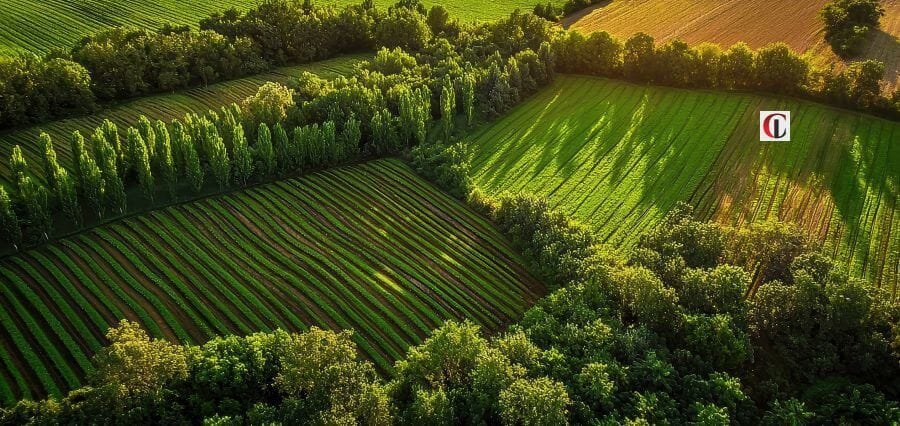Climate change is a major threat to human life, agriculture, and the environment worldwide. Increased temperature, altered weather patterns, increased weather events, and elevated levels of carbon dioxide have far-reaching impacts on agricultural production, biodiversity, and water sources. Agroforestry provides a sustainable mechanism for climate change adaptation and mitigation to the issues.
Agroforestry, or intermixing trees, shrubs, and crops in farms, harmonizes ecological values and sustainable agriculture. Agroforestry, by imitating nature, increases carbon sequestration, soil health, water holding, and biodiversity. Agroforestry, a green approach, not only generates environmental benefits but also increases farm productivity and rural well-being.
Agroforestry and Carbon Sequestration
One of the most significant contributions agroforestry has to carbon dioxide sequestration in the mitigation of global warming is atmospheric carbon dioxide sequestration. Trees and shrubs are carbon sinks that absorb CO₂ during photosynthesis and store it in their biomass and soil.
There is evidence that agroforestry systems can sequester 2 to 5 tons per hectare per year depending on the species used, location, and farm practice. Alley cropping, silvopasture, and forest farming are some in the tropical tropics that have been estimated to have significant potential for carbon sequestration. Agroforestry systems also have the capacity to store carbon for a longer time compared to monoculture plantations.
Improving Soil Quality and Fertility
Soil degradation is one of the most important issues of today’s agriculture, which is being driven by intensive cultivation, forest loss, and global warming. Agroforestry improves the soil quality by various processes:
- Addition of Organic Matter: Leaf litter decomposition contributes organic matter to the soil.
- Better Soil Structure: Tree roots fragment channels in the soil to enhance aeration and water percolation.
- Water Cycling: Tree roots tap lower soil nutrients and release nutrients once more on the surface as leaf fall.
These activities increase fertility in soils, improve water-holding capacity, and reduce the application of chemical fertilizers. Climate-change mitigation by carbon sinks in healthy soils is an added advantage.
Water Conservation and Climate Resilience
Water scarcity is also increasingly caused by rainfall variability patterns, along with prolonged periods of dry spells. Water conserving agroforestry is able to attain through:
- Reduction of surface runoff and erosion of soil through root action of trees.
- Permits for higher water entry into the ground for groundwater basins recharge.
- Microclimatic conditions establishment to reduce evaporation rate and increase moisture level.
Agroforestry systems like waterway riparian buffers protect water bodies against farm wastes and also maintain water quality. Farming drought-resistant tree species in arid areas stabilizes farm production and retains water resources.
Monoculture farming decreases biodiversity and breaks natural processes within ecosystems. Agroforestry increases biodiversity by creating heterogeneous environments for animals and plants. Shrubs and trees introduce pollinators, predator pests, and other beneficial organisms.
This increased biodiversity increases ecosystem resilience, enhancing pest control, pollination, and nutrient cycling. Shade coffee agroecosystems in the tropics increase higher bird and insect diversity compared to open sun plantations. Biodiversity has to be sustained in agroforestry for climatic adaptation and stability in ecosystems.
Reducing Agricultural Greenhouse Gas Emissions
Agriculture is one of the leading sources of greenhouse gases, i.e., methane (CH₄) from enteric fermentation in ruminant livestock and rice cultivation and nitrous oxide (N₂O) due to fertilizer use. Agroforestry has the potential to lower such emissions by:
- Growing nitrogen-fixing trees to minimize the use of synthetic fertilizers.
- Carbon sequestration in soils and tree biomass.
- Encouraging rotational grazing for silvopasture systems with high animal productivity but low methane emission.
Second, agroforestry systems such as alley cropping and forest farming increase farm diversification, and thus lower the environmental expense of farm production.
Economic and Social Returns for Farmers
Other than environmental benefits, agroforestry is highly beneficial economically and socially to farmers, particularly in climatic change-vulnerable areas. Farm diversification—e.g., wood, fruits, nuts, medicinal plants, and livestock—provides multiple sources of income for farmers. Diversification stabilizes agriculture economically and lowers its reliance on a single crop.
Besides, agroforestry supports rural development through employment in planting, care, and processing of the products. Poor and vulnerable communities, such as the indigenous peoples and women, who are involved directly in natural resource management, are enhanced through community-based agroforestry.
Global Initiatives and Policy Support
International agendas including the United Nations Framework Convention on Climate Change (UNFCCC) and the Paris Agreement identify the potential of agroforestry to advance climate action. Agroforestry can be mainstreamed in national NDCs for greenhouse gas emission reduction and carbon sink development.
AFR100, and other such initiatives, is working to rehabilitate 100 million hectares of agroforestry and other degraded forest land by 2030 in the decade. Asian and Latin American regional programmes confirm that agroforestry remains closely associated with climatic resilience issues globally.
Conclusion
Agroforestry is a potential nature-based solution to climate change prevention. Through its integration of trees and crops, it stores carbon, maintains soil fertility, harvests rainwater, and preserves biodiversity. In its diversity and multi-functionality, it is a logical adaptation and mitigation measure to climate change.
To realize the full potential of agroforestry, stakeholders need to overcome the current constraints, invest in training and research, and implement facilitative policies. Because of the increasing global climate crisis, embracing green technologies such as agroforestry is no longer an option but a survival adaptation for the purpose of food production, environmental equilibrium, and livelihood for communities.

